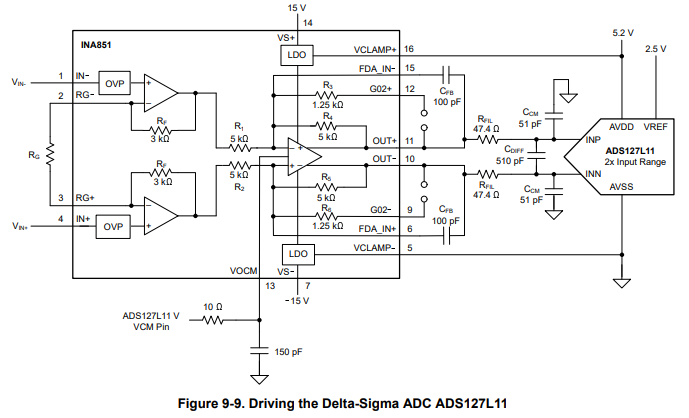Other Parts Discussed in Thread: ADS127L11
Hello,
In the INA851 datasheet Figure 9-9. Driving the Delta-Sigma ADC ADS127L1 the INA851 is used. For a wideband application is it possible to generate a 4-pole filter (2 active, 2 passive) like in the application notes for the ADS127L1 datasheet Figure 9-1. ADS127L11 Circuit Diagram?
In the datasheet for the INA851 there is mention of using the feedback capacitors, C7 and C18 on the EVM. Can you get the additional active pole by placing a capacitor across FDA+ and FDA-?
Cheers,
Joe


